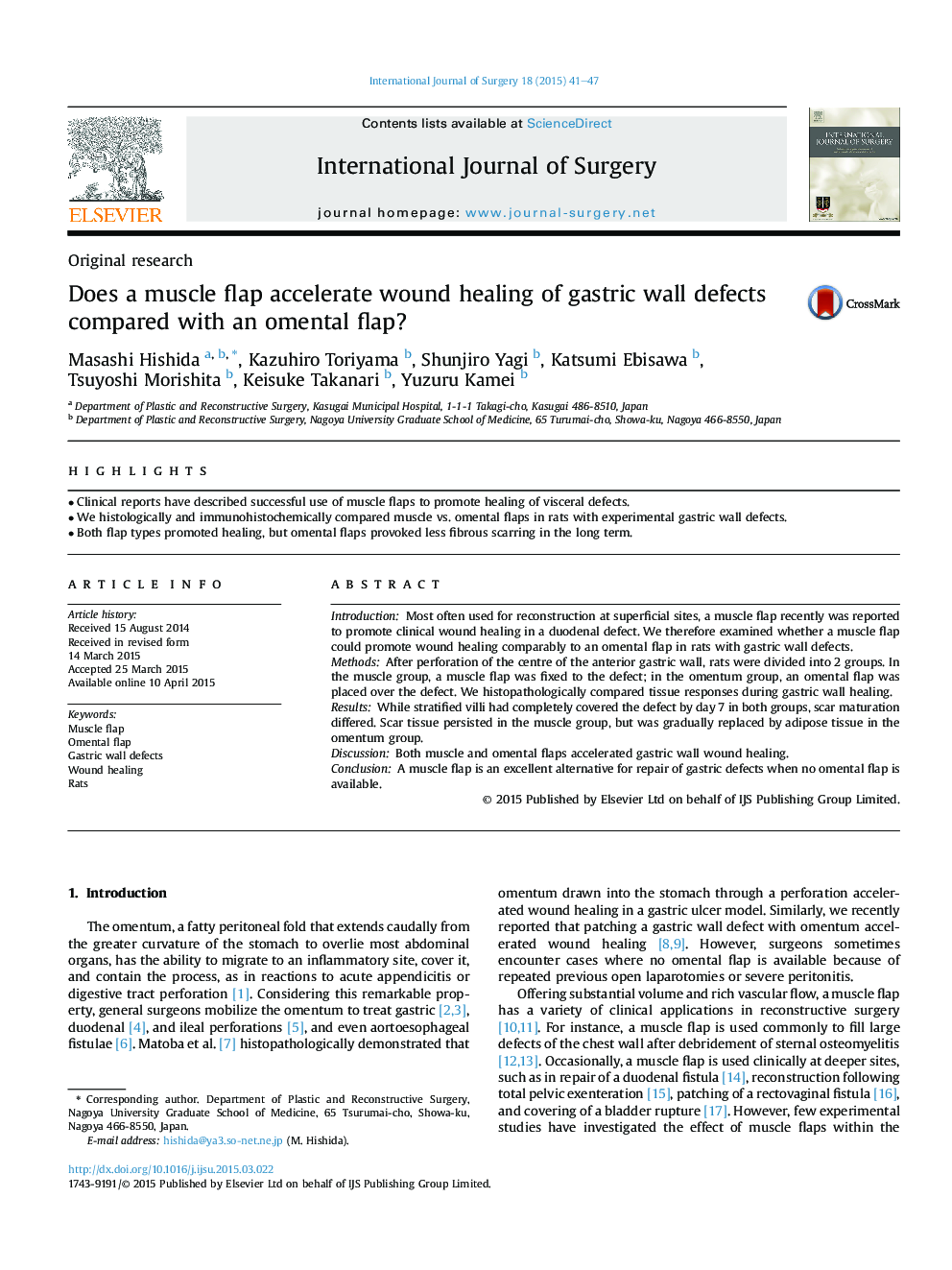| Article ID | Journal | Published Year | Pages | File Type |
|---|---|---|---|---|
| 4285824 | International Journal of Surgery | 2015 | 7 Pages |
•Clinical reports have described successful use of muscle flaps to promote healing of visceral defects.•We histologically and immunohistochemically compared muscle vs. omental flaps in rats with experimental gastric wall defects.•Both flap types promoted healing, but omental flaps provoked less fibrous scarring in the long term.
IntroductionMost often used for reconstruction at superficial sites, a muscle flap recently was reported to promote clinical wound healing in a duodenal defect. We therefore examined whether a muscle flap could promote wound healing comparably to an omental flap in rats with gastric wall defects.MethodsAfter perforation of the centre of the anterior gastric wall, rats were divided into 2 groups. In the muscle group, a muscle flap was fixed to the defect; in the omentum group, an omental flap was placed over the defect. We histopathologically compared tissue responses during gastric wall healing.ResultsWhile stratified villi had completely covered the defect by day 7 in both groups, scar maturation differed. Scar tissue persisted in the muscle group, but was gradually replaced by adipose tissue in the omentum group.DiscussionBoth muscle and omental flaps accelerated gastric wall wound healing.ConclusionA muscle flap is an excellent alternative for repair of gastric defects when no omental flap is available.
